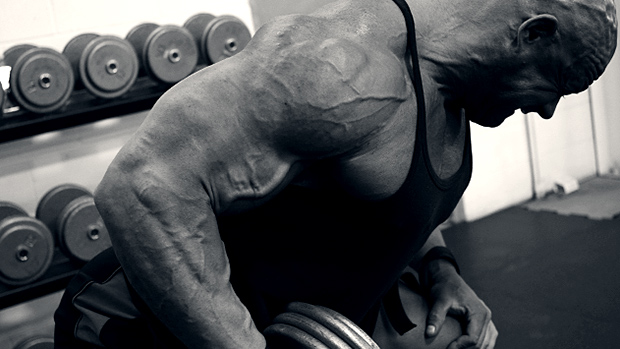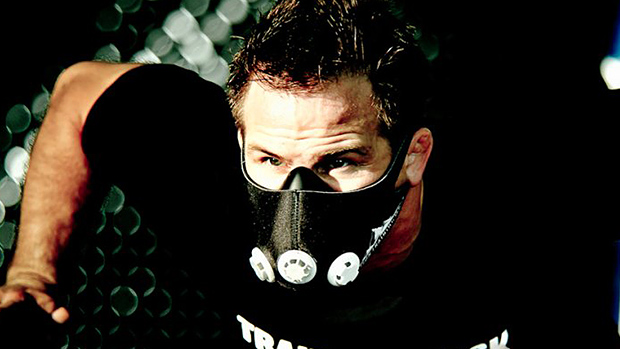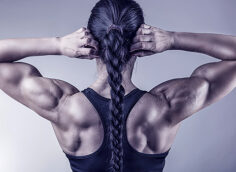I get asked all the time about what is best – and I'm sick of hearing the famous line from Conan. It's not that amusing anymore and as a man, I'm sick of hearing the lamentations of women.
So to cover the bases, these are the answers to the questions I get asked most. While this is only my opinion, be warned, I like to pass them off as fact and then fight endlessly over the internet to prove my point.
1 Best Conditioning Tool – The Prowler

The Prowler is time efficient, space efficient, and training efficient. The only thing it has against it is wallet-efficient, or the lack of it. The thing costs a few more bucks than many people are willing to part with.
I wish the Prowler had been made when I played football – I would've mugged a few frat boys to get the cash to buy one. I'm not telling you to rob frat boys, but if you do, make sure you check the front pockets of their khakis.
The Prowler is easy on the knees and hard on the legs, hips, and lungs and requires the same skill level as being a United States Congressman – in other words, any idiot can do it.
It's my tool of choice for almost anyone looking to get strong as hell, not look awful, or that needs a mental and physical challenge to offset the de-evolution of the human race.
If I were Emperor of the United States, everyone would have to push the Prowler. Every day. Twenty trips.
This would cure some unwanted pregnancies (too tired to screw), decrease many diseases (diabetes, heart disease, being gross) and make people actually have to do something physically demanding (increase mental toughness). Health care costs would go down, real self-esteem developed, and we'd now have an Olympic event to replace men's figure skating.
2 Best Assistance Exercise – Dumbbell Row

Done without straps, the dumbbell row is one of the few assistance exercises that seem to help just about every big barbell lift. Whether you do "regular" dumbbell rows or Kroc rows (20-50 reps with the heaviest weight you can possibly handle), the DB row is great for all upper body lifts, squats, and especially deadlifts.
DB rows build lat and upper back strength, both of which are essential for pressing big and finishing the deadlift. Also, who doesn't need a thick shelf to put a barbell on during squats? And performed without straps, the DB row (specifically Kroc rows) is great for curing any grip problem.
Yesterday I bought an Olympic DB handle from Spud, Inc. I haven't used it yet, but this thing is a converted Texas Power Bar that can hold 500+ pounds of 10-pound Olympic plates. If you have a home gym and need something to row, this may be your best answer.
3 Best Way to Get Stronger – Ethan Reeve
Many years ago, when I had a dream of working as a collegiate strength and conditioning coach (also known by the exceedingly pretentious title of Performance Specialist), I attended a CSCCA conference.
While at the award ceremony to honor some of the legends in the field (Boyd Epley's hair is remarkably similar to football coach, Jimmy Johnson), I had the opportunity to sit at the same table and talk shop with a dozen or so people in the business, including Ethan Reeve.
After several minutes of people talking about this program and that program and sets and reps and exercises, Ethan uttered this true gem of knowledge that I'll never, ever forget:
"The best way to get stronger is to add weight to the bar."
This simple statement obviously goes much deeper than adding some 10-pound plates to the bar, but it helps clear up a major point of confusion – at some point, to get stronger, you're going to have to add some weight to the barbell.
You can argue all you want about frequency and exercises and programming, but at the end of the day, you need to lift bigger weights to get stronger.
So thanks to Ethan Reeve for saying this. Of all the hour-long presentations given that weekend and all the seminars I've listened to, this one quote is probably the smartest and most grounding thing I've heard in 25+ years.
4 Best Way to Become Mobile – Defranco Agile 8

I've been championing the Agile 8 for years now and I believe it's the best, most efficient way for people to increase their lower body mobility. The majority of us spend a lot of time squatting, deadlifting, and doing various Olympic pulls – and then spend the rest of the time sitting on our asses at work and at home.
While technology and medical science have shown how we've grown mentally as human beings, many of these things (and others) have regressed the Human Animal. We've been declawed and our teeth have become dull.
The Agile 8 is simple to do and takes little time, only effort. The biggest problem is frequency – people who are incredibly stiff and immobile need to address this problem much more frequently than 3-4 times/week.
If you find yourself in this category, I ask you to do the Agile 8 two to three times a day for several weeks. The improvements are going to be amazing and you'll not only lift better but you'll feel better.
Here is the Defranco Agile 8, and an article about it:
- Foam Roll/PVC Pipe: IT band
- Foam Roll/PVC Pipe: Adductors
- Lacrosse Ball: Glute/piriformis release
- Rollovers into "V" sits: 10-20 reps
- Fire Hydrant Circles: 10 reps/leg, forward and backward
- Mountain Climbers: 20 reps/leg
- Groiners: 10 reps
- Static Hip Flexor Stretch: Perform 3 sets of 10 seconds on each leg
5 Best Home Gym Setup

The best investment I ever made has been my home gym. Housed in my garage, it has everything I need to get stronger. Plus, I don't have to work around anyone's schedule, I can train whenever I want, and most importantly, I can train alone. I admit that I went overboard on some of the equipment, but it was exactly what I wanted.
The idea of a home gym seems to be out of reach for many. Space is obviously an issue but cost seems to be the biggest obstacle for most. I'm here to tell you that a home gym is incredibly inexpensive. I should rephrase that – a home gym is inexpensive if your goal is to be strong and awesome.
There are three basic pieces of equipment that a home gym of Strength and Awesome must contain: a platform, squat stands, and a quality barbell/plates.
There are many places to purchase squat stands, so shop around and try to find the best quality squat stands for the best price. Do not always choose by price. There is a saying I like: "Buy nice, don't buy twice."
By far the best "all-around" barbell I've tried so far is a Texas Power Bar. It can be used for squats, deadlifts, presses, and (gasp) cleans and snatches. That may be heresy to some but if you aren't a competitive Olympic lifter, a Texas Power Bar is going to be fine.
Weights can be bought for cheap online or you can find gyms that are closing and looking to get rid of their equipment. While bumper plates are nice, they're also very expensive and not always an option – and you can still do cleans and snatches with metal plates (check out the video that Mark Rippetoe has on his website on how to not drop a barbell).
Note: I love using bumpers for squats and presses, as they don't rattle when I lift and it feels much better on my shoulders, so instead of freaking out about the price, I add in a pair of 45's every so often. Since I plan to lift for the next hundred years, I save my money and I'm patient.
As for building a platform, this is easy. There are numerous places online that have plans for building a platform. I built mine for around $250 and it's a tank. You can squat, press, deadlift, and pull on the platform.
These three simple things allow you to do everything you need to do to get stronger. A couple of years ago, I made a comment during a seminar that if you can't train with these three things, you've lost the essence and purity of strength training.
Of course, there's more to that statement than what meets the eye, but don't think you need anything other than these things to get cock strong. While other stuff may be nice, it isn't necessary.
6 Best Myths in Strength Training
- "You must train with strong people to get strong!" While this may be ideal, few people have this luxury, and I see it being used as an excuse for weakness by those that train alone or with "regular" training partners. If you train alone, find a way to get it done. You're not trying to accomplish astral plane projection – you're trying to lift a couple pounds more.
- "Stretching makes you slow." Maybe it's the application of stretching that makes a difference?
- "Scientific studies prove me correct!" There's a general rule in this industry that you should use whatever scientific study supports your way of thinking and disregard any other study that proves the opposite, citing quackery. Alwyn Cosgrove once said that if you took a lifter and had him perform a 1RM in the bench press, and then later the same day had him perform a full bench press workout complete with assistance lifts followed by having him test his 1RM again, the said lifter would test lower. Thus, you've just proven that weight training makes you weaker. So take each study you read with a huge amount of skepticism and understand that humans always have an agenda.
- "You must squat to have big legs!" This one is pretty much correct, unless you suck at squatting, at which point you talk about the merits of not squatting.
- "He doesn't know what he's talking about. Sure he's strong but he's a genetic freak!" A friend of mine once used a half dozen lifters, all of elite caliber, to prove his point about training. The response was, "You can't use them to prove your point – they're strong as hell!" I'm confused – was he supposed to use weak people to prove his point? When did people get lifting-cred based on shitty strength, shitty lifts, and shitty work ethic?
It's an odd turn of events when people who are strong are automatically labeled as "genetically gifted." I'm 100% sure this is the result of people unwilling to come to terms that maybe, just maybe, the other person works harder and trains smarter. Don't crap on someone else's efforts and accomplishments because you don't have what it takes.
7 Best Books on Strength Training

- Starting Strength by Mark Rippetoe. Starting Strength does the best job describing and teaching the squat, bench press, press, deadlift and power clean. It doesn't matter what program you do if you do half-squats and awful presses. And if you don't like where he has you look when you squat, change it.
- 5/3/1: The Simplest and Most Effective Training System for Raw Strength by Jim Wendler. Yes, this is my book, but if I didn't believe in it 100%, I wouldn't have written it.
- Supertraining by Mel Siff. While not exactly the easiest book to read, Mel Siff is incredibly thorough and it's a great reference book.
- Science of Sports Training by Thomas Kurz. Very underappreciated book and much easier to read than Supertraining.
- Russian Manuals. Just about everyone has these in their library (there are numerous books that are labeled as "Russian Manuals") and they all contain a wealth of information. I'm always a bit wary of reading translated books (second hand information is always filtered), but unless I take the time to learn Russian, I'm going to have to take the translators work as gospel.
- Train to Win by Martin Rooney. While Martin is best known for his book Training for Warriors, this book is probably more applicable to every lifter and athlete.
Your Best
Best of lists are the epitome of subjective, and something I might consider to be "the best" may be on another person's "sucks donkey balls" list. And that's okay. The world would be a decidedly boring place if everyone liked the same things, whether it's music, books, movies, or training.
But as someone who has helped a lot of people get stronger, these are the things that really benefitted me in my journey of strength. I'm confident that they can do the same for you.





